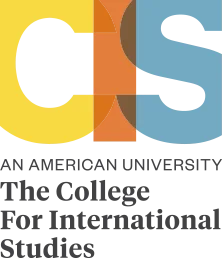The day began in an interesting way for the students of the degree in Marketing Communication and Advertising at CIS University.
That morning, as soon as they entered the classroom like any other day, the students found several thermoses of coffee, sugar, teaspoons, and a table covered with some mysterious dark cups, similar to those of a famous franchise of American coffee houses.
At that time, the students did not know it yet, but they were in the midst of a visit from Colombia of Alejandro “Alejo” Cruz Peralta, a businessman and entrepreneur, with a degree in International Business Administration and a revolutionary product called Colfé.
However, before starting the presentation, Alejo addressed the attendees and offered them the opportunity to enjoy a stimulating cup of coffee.
–Good morning, today I am going to talk to you about a new product, ‘Colfé’, but since it is very early and some of us are still half asleep, what would you think of coming over and having a freshly brewed coffee? Go ahead, help yourself.”
Once they were seated, and after serving a steaming cup of coffee, everyone was surprised when the speaker from the podium asked them:
–Very good. Now, tell me, what material do you think the cups we are using today to drink coffee are made of?”
After a short discussion, the answer stumped the entire class:
The glasses were made with used industrial coffee grounds!

How to reduce the environmental footprint from the first cup of coffee
Alejo explained that Colfé’s thermal containers are made from a compacted mixture of used coffee grounds, a low percentage of polymers and natural binders such as sugar cane molasses. This amalgam is similar to natural clay, and after drying in industrial ovens, it results in a hard and impermeable material, similar in appearance to PVC but biodegradable, reusable, recyclable and with practically zero chemical elements.
The name of the product, Colfé, arose from the contraction of the famous export label “Colombian Café”, in recognition of the importance of the coffee industry in the Colombian economy and culture.
One of the most remarkable elements is that this project complies with the European directives to be considered as a productive model of Circular Economy, since it reduces and reuses waste derived from the Coffee Industry, favors recycling, while reducing the waste and consumption of raw materials.
Alejo’s masterclass not only presented an innovative product, but also unveiled Colfé’s strategy, positioning and next moves. The students (who knows if they were stimulated by the coffee or by the brand’s possibilities), immersed themselves in a brainstorm of ideas and suggestions on how to promote and increase sales of this sustainable and revolutionary product.
The presentation was as smooth as the edges of a cup on the tablecloth, leaving the students inspired and motivated to embrace sustainability in their daily lives, with acts as common as having their first coffee in the morning.
In the end, Colfé’s masterclass, within the teaching initiatives to promote entrepreneurship, left a good aftertaste in our mouths and promises to change the way we enjoy coffee and care for the environment.


